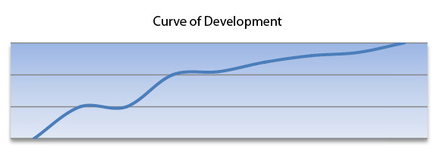“Open blog post to Scott1793”
Reading a question from one of our members, Scott1793, got me thinking, and prompted me to write this blog post.
Scott’s question was short and simple “What is the best way to train your ear so you can play what you hear in your head instantly on the guitar??????”
I want to address this “answer”, or rather my thoughts on the subject, to Scott, and everyone else that might have this problem.
First thing Scott, if you can't sing what's in your head, there's little chance you'll get it out through your fingers so to say. SO, one initial exercise would be to practice improvisation over more melodic backings (such as those on gilmourish.com) and SING every little thing you play. Step by step, your ear will improve, and the gap between what you hear in your head and what you play will narrow.
Of course there are many other steps and measures to be taken. Timing and note value alteration is a KEY concept to be able to accurately "translate" what's in your head. It will act like a focal point for your mind as well as your practical playing. You see, in the formative years as we strive to play "what we hear in our head", one of the big problems is that what we actually hear is so out of focus and fragile. Let me ask you a question Scott.
Have you had the experience of having a crystal clear line or idea in your head, both melody and rhythm? I'm sure you have or you wouldn't ask this question
Have you then tried to transfer this idea to the guitar and as you try to find it, and can't, you will find that you can't remember the original line in your head anymore? Is it as if actually trying to play something on the guitar “erases” what was in your head?
More often than not, it IS that fragile. I clearly remember sometimes waking up in my teens, having this vivid “dream-like” musical idea in my head, only to find myself utterly unable to capture it once reaching for the guitar, it was just like catching mist!
You often read stories of guys like Mozart, or Zappa even, and other great musicians and composers being able to sit with a piece of paper and just write down the music that was in their head, even massive orchestral scores, being able to visualize every single note and instrument in their mind’s eye! Now wouldn’t THAT be something! That ability and level of connection to our inner music is so very rare though, that it will never be more than a dream for most of us. However, practicing singing our lines and ideas, can and WILL bring us closer to reaching our OWN potential.
Having a good ear for music, being able to sing a line, and repeat on your instrument, being able to sing notes and intervals solely by ear, and even such clashing intervals as a minor seconds is essential to be able to play what you hear in your head.
Above I mentioned having timing, and singing as a focal point. What will happen as you practice such things is not so much that your fingers will get better finding the right notes. It is rather that you will “train” your inner ear to achieve great focus and conditioning. This means that your inner ideas, even though coming from a place of creativity will be more “organized” and easier to translate. Organizing and training your inner ear is not easily achieved, and takes time and patience, but it can be done, and is in my opinion THAT much more important than practicing technique day in and day out.
So Scott, to be concrete and summarize some advice and exercises for you I would make this list.
- First of all, take a very simple groove, that sticks to one single key, and one single chord, say Am, and does not modulate. Start by singing THREE note ideas, just out of the top of your head. Even though you might or might not KNOW what specific notes you are singing, I guarantee it you will sing notes within the key. Most people will be able to do this, without even reflecting upon it, and musicians especially.
After singing these three notes over the chord, try to find them in the scale. As soon as you find them, sing three more notes, and repeat the process. - Then add a chord or two to the grove, say use the progression C-G-Am-Am. Then sing three notes, one over each chord, be silent on the last Am, and then when the vamp start up again, try to find what you just played on the guitar.
This would be an initial exercise. Then adding rhythm exercises and more advanced exercises will just develop your ear even further. Then, start singing AS you play over these progressions. Also pay attention to the rhythm of your singing, this is as important to be able to flat out improvise what’s in your head.
Of course, IF you want to take this ability to the next level, you would need to sing and play over more advanced progressions and scales, but the key is SINGING! Even advanced jazz players does it all the time, and especially when starting out, singing lines you want to learn in jazz is KEY. This way you will hear the chord at the same time as you hear your voice in your own head. This is COMPLETELY different from just playing and hearing your guitar and the chord. When singing, you get a “feel” inside your head how the melody rests or acts against the chord, which is a very different way of listening, ACTIVE listening, rather than the passive listening of noodling through scales you theoretically know are right over a chord.
Enough rambling for this time guys, see you soon again =)
//Richard
Related lesson at Infinite Guitar:
Ear Training for Greater Musical Proficiency Tutorial
Perception vs. Harmonic Context Tutorial



 RSS Feed
RSS Feed